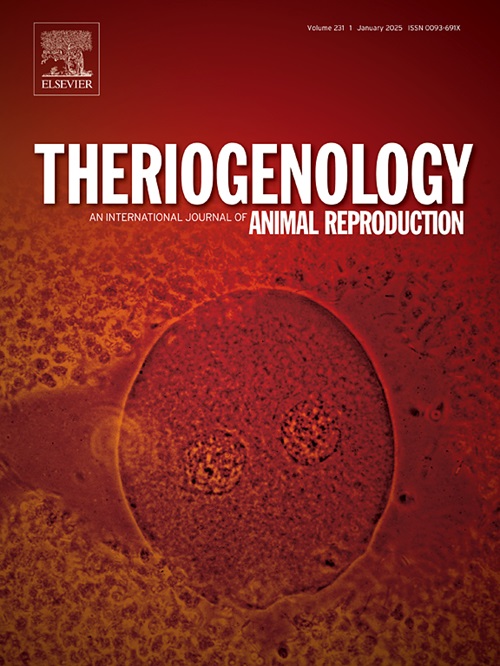卵巢组织冷冻保存前的最佳酶处理。基于统计和模型的分析
IF 2.4
2区 农林科学
Q3 REPRODUCTIVE BIOLOGY
引用次数: 0
摘要
目的是研究一种基于数学模型的创新方法,以分析使用酶预处理卵巢组织以增加其渗透性的潜在益处。我们的方法旨在阐明酶预处理是否会增强冷冻保护剂在卵巢组织中的渗透,从而更好地保存和提供最佳结果,以获得无损伤的原始和初级卵泡。评估了五种酶处理(TrypLE、胶原酶、疾病酶、急性酶、透明质酸酶)对绵羊卵巢组织的影响,重点是渗透深度和组织损伤。最初的结果显示,在长达45分钟的孵育中,所有酶的渗透都相似,但更长时间的处理显示出差异。在180分钟内,疾病表现出最大的渗透,但具有很强的侵袭性,导致组织迅速溶解。研究发现,TrypLE和透明质酸酶在最大限度地减少卵泡损伤,同时确保足够的组织渗透方面最有效,特别是当应用10分钟时。TrypLE在10分钟后引起明显的水肿,但在15分钟后水肿减少。透明质酸酶引起的水肿最小,渗透性好,使其成为增强卵巢组织渗透性的理想选择。本研究表明,透明质酸酶和TrypLe预处理10分钟是增强卵巢组织通透性的潜在候选药物,在渗透和最小组织损伤之间提供了最佳平衡。这些发现可以改善生育保存技术和未来的冷冻保存策略。本文章由计算机程序翻译,如有差异,请以英文原文为准。
Towards the best enzymatic treatment prior to ovarian tissue cryopreservation. A statistical and model-based analysis
The objective was to study an innovative approach based on a mathematical model to analyze the potential benefits of using enzymatic pre-treatment of ovarian tissue to increase its permeability. Our approach aims to elucidate whether enzymatic pre-treatment would enhance the penetration of cryoprotectants in the ovarian tissue, leading to better preservation and giving best results for obtaining primordial and primary follicles without damage. The effect of five enzymatic treatments (TrypLE, collagenase, dispase, accutase, hyaluronidase) over time on sheep ovarian tissue was evaluated, focusing on penetration depth and tissue damage. First results showed that up to 45 min of incubation, all enzymes penetrated similarly, but longer treatments revealed differences. Dispase showed the greatest penetration at 180 min but was highly aggressive, causing rapid tissue lysis. TrypLE and hyaluronidase were found to be the most effective in minimizing follicular damage while ensuring sufficient tissue penetration, particularly when applied for 10 min. TrypLE caused significant edema after 10 min, but this was reduced after 15 min. Hyaluronidase caused minimal edema and had excellent penetration, making it ideal for enhancing ovarian tissue permeability. The present study showed that pre-treatments with hyaluronidase and TrypLe for 10 min are potential candidates for enhancing ovarian tissue permeabilization, offering the best balance between penetration and minimal tissue damage. These findings could improve fertility preservation techniques and future cryopreservation strategies.
求助全文
通过发布文献求助,成功后即可免费获取论文全文。
去求助
来源期刊

Theriogenology
农林科学-生殖生物学
CiteScore
5.50
自引率
14.30%
发文量
387
审稿时长
72 days
期刊介绍:
Theriogenology provides an international forum for researchers, clinicians, and industry professionals in animal reproductive biology. This acclaimed journal publishes articles on a wide range of topics in reproductive and developmental biology, of domestic mammal, avian, and aquatic species as well as wild species which are the object of veterinary care in research or conservation programs.
 求助内容:
求助内容: 应助结果提醒方式:
应助结果提醒方式:


